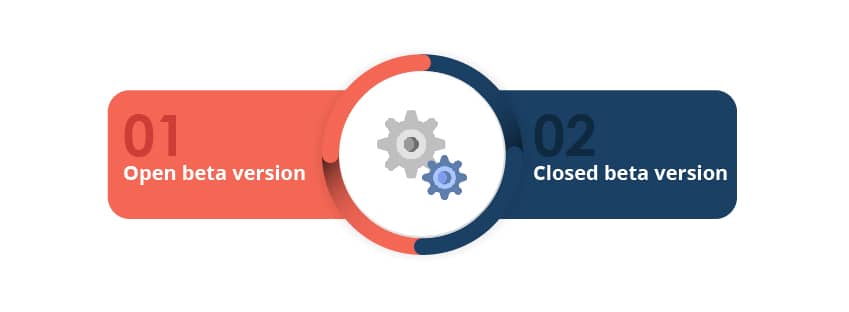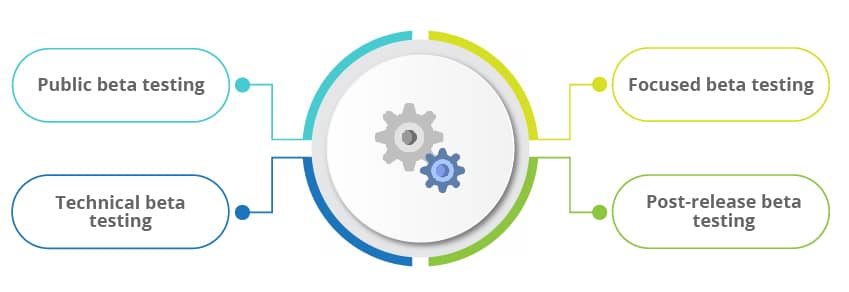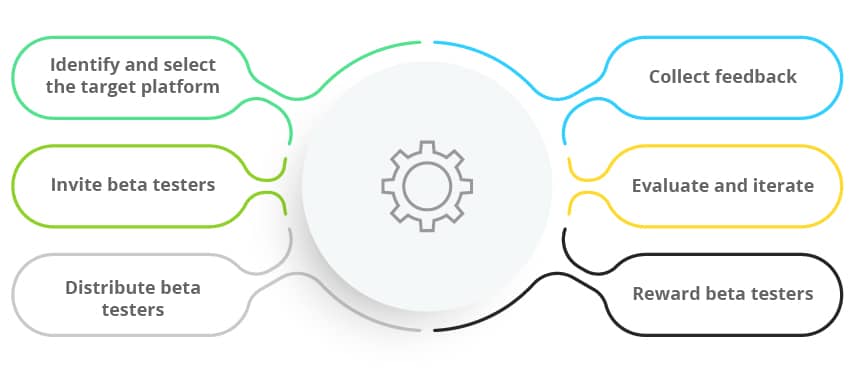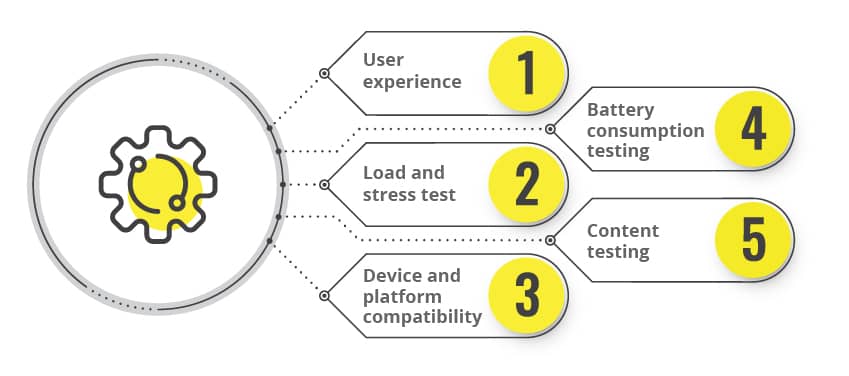Beta Testing – An Informative Guide

Table Of Content
In the journey of software development, releasing a product that truly meets user expectations requires thorough validation beyond internal testing. Beta testing plays a pivotal role in this phase by involving real users in the testing process before the final release. It serves as a critical bridge between internal quality assurance and the live market release, helping uncover potential issues, gather valuable user feedback, and validate usability in real-world conditions.
Beta testing allows organizations to identify bugs, assess performance, and understand user behavior across diverse environments and use cases. This phase not only helps refine the product but also builds confidence and readiness for a successful launch. In this guide, we will explore what beta testing is, its significance, different types, best practices, and tools commonly used to run effective beta tests.
What is Beta Testing?
Beta testing is a type of external user acceptance testing and represents the final phase of software testing before a product is released to the general public. In this stage, a nearly completed version of the software—called the beta version (usually 90-95% complete)—is distributed to a limited group of real end-users outside the development team.
The purpose of beta testing is to gather valuable feedback on various aspects of the software, such as accessibility, usability, reliability, and overall functionality, in real-world environments. Unlike internal testing, beta testing involves actual users interacting with the product in a production-like setting, usually with minimal limitations.
Key stakeholders in beta testing include the product management, quality assurance, and user experience teams, while the participants are typically representative end-users or customers. This process helps identify issues that may not have been caught earlier, ensures the product meets user expectations, and provides insights to refine the software before its official release.
What is the Purpose of Beta Testing?
The main purpose of beta testing is to have the product evaluated by real users in a real production environment before it is released to the broader market. This approach helps gather valuable, authentic feedback that can be used to identify issues, fix bugs, and improve the product’s usability, functionality, and overall quality.
Beta testing provides genuine, real-time insights into how actual end-users interact with the product, helping validate whether the software meets user expectations and will be well-received upon launch. It also assesses compatibility across diverse devices, operating systems, platforms, and browsers, ensuring the product functions smoothly in varied real-world scenarios.
Moreover, beta testing supports the ongoing process of continual improvement, allowing the product to be refined iteratively based on user feedback before and even after release. This ensures a more stable, user-friendly, and successful final product that aligns closely with market needs.
Benefits of Beta Testing
Beta testing offers several important benefits that help improve product quality, enhance user satisfaction, and reduce launch risks:
- Prompt Feedback: Real users provide timely feedback that helps identify issues and improve the product before the final release, making it more satisfactory for customers.
- Testing Reliability and Usability: Beta testers evaluate the software’s reliability, usability, and robustness, offering suggestions to developers to better align the product with customer expectations.
- Informed Decision-Making: Feedback from real-time users helps various organizational teams make well-informed product decisions, refining features and functionality.
- Bug Detection: Beta testing uncovers bugs and issues missed during internal testing cycles, improving overall software quality.
- Real User Insights: Since testing occurs in a production environment by actual users, it gives genuine insights into customer likes and dislikes, driving user-centric improvements.
- Customer Involvement: Engaging customers in beta testing makes them feel valued, fostering loyalty as their opinions contribute to product enhancement even before launch.
- Reduced Risk of Product Failure: Pre-launch testing by a wider audience reduces the risk of major defects reaching the market.
- Increased Customer Satisfaction: Incorporating beta testers’ suggestions helps deliver a product that better meets user needs, enhancing satisfaction and adoption.
Overall, beta testing bridges internal testing and market release by providing authentic, actionable feedback that leads to more reliable, user-friendly, and successful products. It also supports continuous improvement by validating product readiness across diverse real-world scenarios.
What are the Beta Version releases and Beta Testing types?
Beta versions are pre-release builds of software made available to users for real-world testing and feedback before the official launch. These versions are typically 90-95% complete and aim to uncover issues, validate usability, and gather user insights.
Types of Beta Version Releases:

Open Beta Version (Public Beta):
This beta is accessible to the general public or any interested user. Anyone can download, use, and provide feedback on the beta product. Open beta testing helps identify bugs across a broad user base and collects diverse suggestions for improvement. It also allows developers to validate that the product performs well under real-world conditions and meets customer expectations.
Closed Beta Version (Private Beta):
This beta is shared exclusively with a selected group of users, usually by invitation. The testers are often existing customers, early adopters, or paid participants who provide focused feedback. Closed beta testing offers controlled feedback from knowledgeable users and helps catch issues before exposing the product to a wider audience.
Types of Beta Testing:
Besides the release scope, beta testing can be categorized based on objectives and participation:

Public Beta: In this testing method, the software product is delivered to people worldwide via online channels, and the feedback from users is collected through the online channels only. Based on this feedback and data collected from users, the changes and modifications are made to the product so that it delivers a great experience to users.
Technical Beta: Focused primarily on uncovering technical issues such as crashes, performance bottlenecks, and integration problems. Testers usually have technical expertise and report detailed bug information.
Focused Beta: Targets a specific user group or demographic segment to test features relevant to that group, helping tailor the product before mass release.
Post-Release Beta: In this testing type, the software product is released to the market for the end-users, and their feedback, suggestions, and data are collected for the future release of the software.
These beta release types and beta testing categories help organizations progressively validate and refine their products—from limited, focused testing to broad user feedback—before full market launch.
How to Create a Beta Test Strategy?
Building a well-defined beta test strategy is crucial for maximizing the value of your beta testing phase. A comprehensive strategy should address the following components:
- Business Objective of the Product: Clearly outline what the product aims to achieve and the goals you expect from the beta testing phase (e.g., validation of core features, usability checks, performance feedback, or measuring market readiness).
- Schedule for Beta Testing Phases: Define the timeline, including start and end dates for all phases—recruitment, onboarding, active testing, feedback collection, and post-beta review. Set key milestones and deadlines to keep the process organized and on track.
- Beta Test Plan: Detail the scope of testing, including which features or areas will be tested, how long each will be tested, and at what depth. Describe participant demographics, selection process (open or closed beta), and expected number of testers.
- Beta Testing Approach for Participants: Provide clear instructions for testers on how to participate, what scenarios or tasks to focus on, and how to report issues or suggestions. Set communication channels, support resources, and escalation procedures.
- Tools for Bug Tracking, Productivity, and Feedback: Specify the platforms and tools testers will use—such as bug tracking systems (e.g., Jira, Bugzilla), feedback collection tools (e.g., UserVoice, SurveyMonkey), and productivity measurement dashboards. Ensure all participants have access and instructions.
- Rewards and Incentives for Testers: If applicable, outline any rewards—such as gift cards, free subscriptions, or product merchandise—to motivate participation and high-quality feedback. Communicate eligibility and distribution processes clearly.
- Entry and Exit Criteria: Establish clear requirements for starting and concluding the beta phase. Entry criteria may include product maturity, test environment readiness, or documentation. Exit criteria typically involve achieving a certain level of feedback coverage, resolving critical bugs, or passing specific quality benchmarks.
Summary: Developing a robust beta test strategy means documenting your objectives, plans, timelines, methods, and tools—all tailored to ensure meaningful engagement and actionable feedback. This approach improves product readiness, increases tester satisfaction, and helps ensure the beta test is both structured and successful.
What Are the Steps Involved in Beta Testing?
Let’s now understand the steps that are involved in performing a beta test:

1. Identify and Select the Target Platform
Choose the operating systems and devices on which you want to test your product. Consider your product’s requirements and audience to ensure coverage across relevant platforms.
2. Invite Beta Testers
Recruit a diverse group of beta testers—ideally 200–300 at the start—for meaningful feedback. Leverage sources such as websites, social media, forums, directories, and personal contacts to find willing participants.
3. Distribute Beta Testers
Use appropriate distribution tools (e.g., TestFlight, Google Play Developer Console, Crashlytics) to provide beta testers with access to your product in a controlled and organized manner.
4. Collect Feedback
Gather feedback from testers regarding their experience, focusing on functionality, usability, and reliability. Use feedback forms, bug tracking tools, or direct communication channels.
5. Evaluate and Iterate
Analyze the feedback and suggestions received. Prioritize changes or fixes and iterate on the product to enhance its quality and user experience before the final release.
6. Reward Beta Testers
Show appreciation for testers’ time and input by providing incentives such as coupons, discounts, promo codes, or other rewards as promised.
Following these steps ensures your beta testing process is structured, productive, and yields actionable insights—ultimately helping you deliver a more robust and user-friendly product.
Some of the Ideal Use Cases of Beta Testing:
Some of the ideal use cases of beta testing that help organizations validate real-world application quality before full release:

User Experience Evaluation
Beta testing allows you to observe your app’s performance in real user environments, providing crucial insights into whether it delivers a satisfying and intuitive user experience. Feedback from real users highlights areas of delight or frustration, helping guide improvements.
Load and Stress Testing
By exposing your app to a larger audience simultaneously during beta, you can assess its ability to handle high user volumes. This reveals any performance bottlenecks, server issues, or failures under peak load conditions that might not appear in internal testing.
Device and Platform Compatibility
Beta testing across diverse devices (different smartphones, tablets, operating systems, browsers, etc.) ensures your app works reliably for all users. Real-time reports from testers help identify and resolve compatibility issues you may not have anticipated in lab environments.
Battery Consumption Testing
Real users can report on how your app affects device battery life during prolonged use. This feedback is vital—apps with excessive power consumption often face user dissatisfaction and high uninstall rates.
Content Testing
Beta testers can evaluate all in-app content—photos, videos, text, and interactive elements—to make sure it’s engaging, renders correctly, and aligns with user expectations. This helps ensure your app’s content supports a cohesive and enjoyable user experience.
These use cases demonstrate the broad value of beta testing in surfacing user-centric, technical, and performance issues, enabling the delivery of a more stable, compatible, and appealing product at launch.
Alpha Testing Vs Beta Testing
Here’s a clear side-by-side comparison of Alpha Testing vs Beta Testing, highlighting the key differences between these two critical phases of software quality assurance:
| Alpha Testing | Beta Testing |
|---|---|
| Performed by internal employees of the organization | Conducted by real users or end-users who are not employees |
| Executed at the developer’s site | Takes place at the end user’s location (real-world environment) |
| Developers are present during testing and can respond directly | Developers are not present; testers interact independently |
| Conducted in a lab or controlled testing environment | Carried out to check quality, reliability, usability, and more, before launch; performed after alpha testing |
| Uses both black box and white box testing techniques | Relies on black-box testing technique only |
| Typically happens after system testing when the product is 70–90% complete | Takes place after alpha testing when the product is 90–95% complete |
| Each test cycle lasts 1–2 weeks | Each cycle usually lasts 4–6 weeks |
- Alpha testing is an internal process focusing on identifying bugs in a controlled, pre-release environment with access to developers.
- Beta testing is an external phase where real end-users validate how the product performs in real-world conditions—the final step before market release, offering valuable feedback and uncovering issues that might have been missed internally.
Conclusion
Beta testing is a crucial software testing type that enables organizations to validate their product with real users in a production environment prior to full-scale launch. While the scope and scale of beta testing may differ for each product, its core objective remains the same: ensuring the final product meets customer expectations and delivers an exceptional user experience.
However, beta testing comes with challenges—primarily due to its reliance on human participation, leading to potential human errors and complexities in selecting the right testers. In today’s digital ecosystem, businesses also explore beta testing AI tools development to ensure next-gen solutions are user-ready and reliable. To maximize benefits and minimize risks, it’s advisable to partner with an independent testing and QA services provider. Leveraging professional expertise from a next-gen software testing company can ensure thorough, unbiased, and effective beta testing, ultimately contributing to a successful product release and satisfied customers.
FAQs
Beta testing is the process of releasing a near-final version of your application to a selected group of real users before the official launch. It helps identify usability issues, uncover bugs, validate features in real-world conditions, and ensure customer satisfaction. This step reduces risks and increases the chances of a successful product release.
Common types of beta testing include:
-
Closed Beta: Limited to a selected group of invited testers.
-
Open Beta: Available to a larger public audience for broader feedback.
-
Technical Beta: Focused on developers, technical users, or IT teams.
-
Focused Beta: Conducted on a specific feature or functionality.
-
Post-release Beta: Testing after launch to validate stability and adoption.
AI improves beta testing by streamlining the entire process with advanced automation and analytics. Beta Testing AI Tools can automatically detect anomalies, identify hidden bugs, and analyze large volumes of user feedback at scale. They also help prioritize defect reports based on severity, predict potential failure points, and highlight usage trends across different environments. By reducing manual effort and providing faster, data-driven insights, AI enables teams to deliver higher-quality products with quicker turnaround times.
AI provides speed, scalability, and actionable insights, while human testers bring contextual, emotional, and usability-driven feedback. The most effective beta testing strategies use AI for automation and analytics, paired with human judgment for user experience validation.
Discover more
